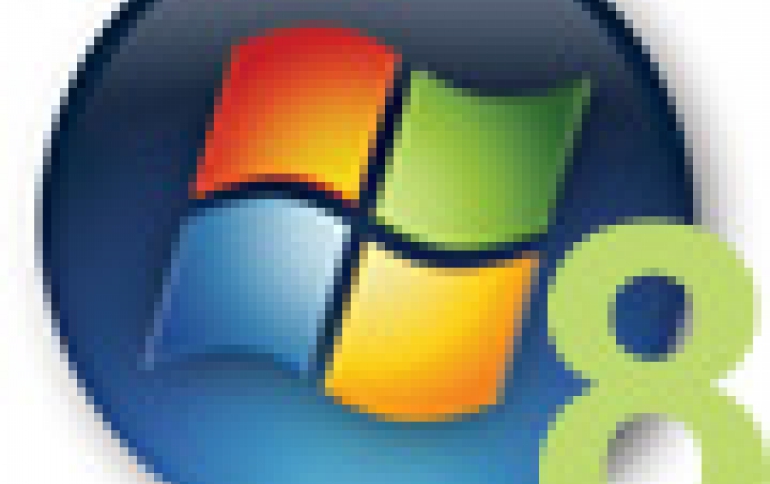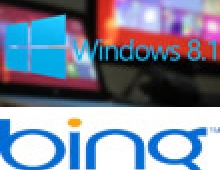
Windows 8 Setup To Be Significantly Faster
Microsoft has made changes to the Windows 8 setup experience, maiking it faster, more flexible and simple than what you may have experience in Windows 7 and Windows XP.
In order to cover the needs of users who just need
an easy way to upgrade to the new release as well as those who need to do a clean install and want more control of setup options, disk layout, and partition configuration, Microsoft will offer a streamlined setup that users will reach by running an .exe from the DVD or via web delivery, and an advanced setup that runs when users boot off of a DVD or USB key.
The streamlined setup is a new experience, optimized for ease-of-use, upgrades, and web delivery via download. Advanced setup is the home of all things familiar to the advanced user, including full support for unattended installation, partition selection, and formatting.
Microsoft will continue to offer boxed DVDs with the Windows 8 OS as well as online versions. In the online setup, Microsoft actually "pre-key" the setup image that is downloaded to a unique user, which means that you don't have to type in the 25-digit product key when you install.
Additional optimizations for the web delivery of Windows 8 include smaller ISO files. An ISO created from the x86 client media is 2.32GB. In order to optimize for download in Windows 8, Microsoft take the required subset of files for the specific version of Windows being downloaded. After eliminating duplicates and compressing resources, the single-file size is 2.10GB (as compared to 2.32GB), a savings of 9.5%. After this optimized package is created Microsoft compresses it using an improved compression algorithm specifically for Windows 8 setup, which provides an additional 28% savings. In this example (using the Windows 7 x86 ISO) the size of the download would be reduced from 2.32GB to 1.51GB.
Streamlined setup
The first thing Microsoft does during the streamlined setup is to scan the PC to determine compatibility. It provides information on the apps and devices that will work in Windows 8, those that won't work, and any other system information that is useful to know when determining whether or not to purchase and install Windows 8.
Next, an integrated download manager provides time estimates, data validation, the ability to pause, resume, and re-download only parts of the file if something goes wrong. Additionally, because Microsoft has already scanned the PC to determine compatibility, the download manager knows which version of Windows 8 to download - eliminating the need to ask questions such as which language or OS architecture to choose.
Once the download is complete, you are presented a choice to continue the installation, or install on another partition. The latter option takes you to advanced setup, and allows you to save an ISO or create a bootable USB drive before completing other advanced setup options. (This is the option you?ll need to choose if you want to dual boot, for example.)
Next is the upgrade choice. You can choose to keep all, some, or none of your personal data depending on the OS you're upgrading from, and your personal preferences.
The "Windows settings, personal files, and apps" option is akin to the existing "upgrade" option in Windows 7 and Windows Vista, where an in-place upgrade is performed over the current OS, retaining the apps that were previously installed as well as settings and user files on disk.
The "Just personal files" option is a new functionality, which allows you to get a clean install, but still keep your data without a separate tool such as Windows Easy Transfer.
Advanced setup for IT Pros
The advanced setup installation process runs when users boot off of a DVD or USB key. In Windows 7, Microsoft provided a Windows Automated Installation Kit, and in Windows 8 the company has enhanced that with additional tools in the Windows Assessment and Deployment Kit, which is available for download to MSDN subscribers.
For full details about all of the configurations that are possible, check out the Windows 8 ADK (for MSDN subscribers only) or the Best Practices for Authoring Answer Files article on TechNet.
Of course, options such as "unattend" setups are supported, allowing IT admins to customize once and automate the setup procedure. Once you have your answer file configured to your liking you can copy it to the root of your USB media. (Remember, if you use setup from the web, you can still create a bootable USB drive or save to an ISO.) You can also include the file at the root of the DVD media where you burned the ISO, if you chose that route instead. Even cooler, the unattend file doesn?t even have to be on the installation media. In fact you can place the unattend file at the root of a USB flash drive, plug in the flash drive before starting setup, and setup will automatically find it and use it.
The streamlined setup is a new experience, optimized for ease-of-use, upgrades, and web delivery via download. Advanced setup is the home of all things familiar to the advanced user, including full support for unattended installation, partition selection, and formatting.
Microsoft will continue to offer boxed DVDs with the Windows 8 OS as well as online versions. In the online setup, Microsoft actually "pre-key" the setup image that is downloaded to a unique user, which means that you don't have to type in the 25-digit product key when you install.
Additional optimizations for the web delivery of Windows 8 include smaller ISO files. An ISO created from the x86 client media is 2.32GB. In order to optimize for download in Windows 8, Microsoft take the required subset of files for the specific version of Windows being downloaded. After eliminating duplicates and compressing resources, the single-file size is 2.10GB (as compared to 2.32GB), a savings of 9.5%. After this optimized package is created Microsoft compresses it using an improved compression algorithm specifically for Windows 8 setup, which provides an additional 28% savings. In this example (using the Windows 7 x86 ISO) the size of the download would be reduced from 2.32GB to 1.51GB.
Streamlined setup
The first thing Microsoft does during the streamlined setup is to scan the PC to determine compatibility. It provides information on the apps and devices that will work in Windows 8, those that won't work, and any other system information that is useful to know when determining whether or not to purchase and install Windows 8.
Next, an integrated download manager provides time estimates, data validation, the ability to pause, resume, and re-download only parts of the file if something goes wrong. Additionally, because Microsoft has already scanned the PC to determine compatibility, the download manager knows which version of Windows 8 to download - eliminating the need to ask questions such as which language or OS architecture to choose.
Once the download is complete, you are presented a choice to continue the installation, or install on another partition. The latter option takes you to advanced setup, and allows you to save an ISO or create a bootable USB drive before completing other advanced setup options. (This is the option you?ll need to choose if you want to dual boot, for example.)
Next is the upgrade choice. You can choose to keep all, some, or none of your personal data depending on the OS you're upgrading from, and your personal preferences.
The "Windows settings, personal files, and apps" option is akin to the existing "upgrade" option in Windows 7 and Windows Vista, where an in-place upgrade is performed over the current OS, retaining the apps that were previously installed as well as settings and user files on disk.
The "Just personal files" option is a new functionality, which allows you to get a clean install, but still keep your data without a separate tool such as Windows Easy Transfer.
Advanced setup for IT Pros
The advanced setup installation process runs when users boot off of a DVD or USB key. In Windows 7, Microsoft provided a Windows Automated Installation Kit, and in Windows 8 the company has enhanced that with additional tools in the Windows Assessment and Deployment Kit, which is available for download to MSDN subscribers.
For full details about all of the configurations that are possible, check out the Windows 8 ADK (for MSDN subscribers only) or the Best Practices for Authoring Answer Files article on TechNet.
Of course, options such as "unattend" setups are supported, allowing IT admins to customize once and automate the setup procedure. Once you have your answer file configured to your liking you can copy it to the root of your USB media. (Remember, if you use setup from the web, you can still create a bootable USB drive or save to an ISO.) You can also include the file at the root of the DVD media where you burned the ISO, if you chose that route instead. Even cooler, the unattend file doesn?t even have to be on the installation media. In fact you can place the unattend file at the root of a USB flash drive, plug in the flash drive before starting setup, and setup will automatically find it and use it.



















